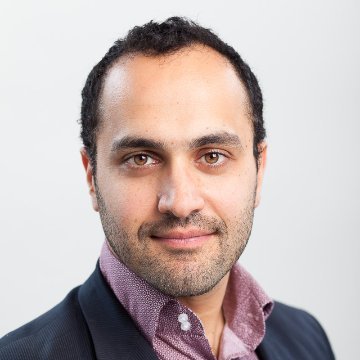
After more than 40 years of operation, DTVE is closing its doors and our website will no longer be updated daily. Thank you for all of your support.
Social media platforms hail age of vertical videos
Content is increasingly being tailored for mobile devices, which are fast becoming the primary devices for viewing online video, according to executives from the leading global social media platforms.
The march of mobile also means to emergence of new formats including ‘vertical’ videos – content that is filmed to enable viewing on mobile phones held upright by their users rather than lengthwise to view content in a traditional cinematic format, according to the execs.
Speaking at a Royal Television Society event this week called Social Media Muscles in on TV, Patrick Walker, Facebook’s director of media partnerships in EMEA said that ‘mobile first’ video was now emerging as a serious phenomenon. “You are seeing more vertical videos and more videos specifically for a mobile audience,” he said.
He said that a lot of people were now doing reformatting of video created for other platforms to create vertical videos as part of their workflows.
Other features of mobile-first videos include sound only kicking in after a period of a few seconds to fit in with people’s mobile phone usage habits.
“Discoverability means sound off at first. Should you think about the first three seconds, vertical and so on if you are being discovered on the news feed.”
Facebook’s move into video is “reflecting a massive seachange” in consumption, said Walker. As creation tools are democratised and platforms allow global distribution, the web will be more and more dominated by video, including live video, 360° content and, in the future, virtual reality experiences, he said.
Walker said that 500 million people now consume videos on Facebook each day. “If you miss live with text and other tools you create interesting dynamics [about] how to create stories,” he said.
Speaking at the same event, Stephen Nuttall, senior director of YouTube, EMEA, said that a lot of people are experimenting with new formats such as VR and 360° video as well as how to tell stories in new ways – including vertical videos. “The pace of change is increasing rather than settling down. There is no playbook that is going to hold for 20 years except tell great stories.”
The highlighting by the RTS speakers of the potential of ‘vertical videos’ comes in the same week that the BBC introduced news in this format as part of its development of online content.
Making online videos pay is more complex however. The RTS discussion made it clear that ‘monetisation’ is still a work in progress. The speakers highlighted the potential of targeted advertising, enabling production outfits to put content on the platform direct, and of brands created their own content and funding content.
Walker said that that brands are increasingly funding programming partly as a result of social media platforms, and that that Facebook is testing new ad formats to make money from video.
Dara Nasr, Twitter’s UK managing director, also speaking on the RTS panel, said that “people want analytics”, especially related to high-production value videos.
Nasr said that about half of video on the platform was currently ‘monetisable’. He said that targeting would be central to making money across all social media platforms.
Separately, the social media platforms responded defensively when challenged about the impact of their platforms on news and the way news is perceived.
Challenged on the emergence of “fake news” on social media, Walker said that “a small percentage of misinformation has been spread on platforms like Facebook and we are trying to work on ways to improve that.” He said that the platform was working on better ways to flag false content but it could not regulate the content on the platform. He said that Facebook was a platform for others, who were responsible for their content – rather than a publishing company that is responsible for the content itself.
Walker also said there had never been a “golden age of truth” in the pre-social media world.
Nuttall also defended the social media platforms’ record, arguing that online platforms had enabled a lot of coverage of news events that previously had not been covered.
Nuttall said that YouTube worked hard to try to ensure legitimacy about news content, and had adopted the method of tagging news that is used by Google News.
He said that “news that is not news” would not be monetized by the platform. However, he added, “it is not for us to become a censor of the internet”.
Nuttall claimed that most people still look to mainstream trusted media outlets for coverage of major news events, even on social media platforms. “People do go to major news broadcasters when they look for news,” he said.





